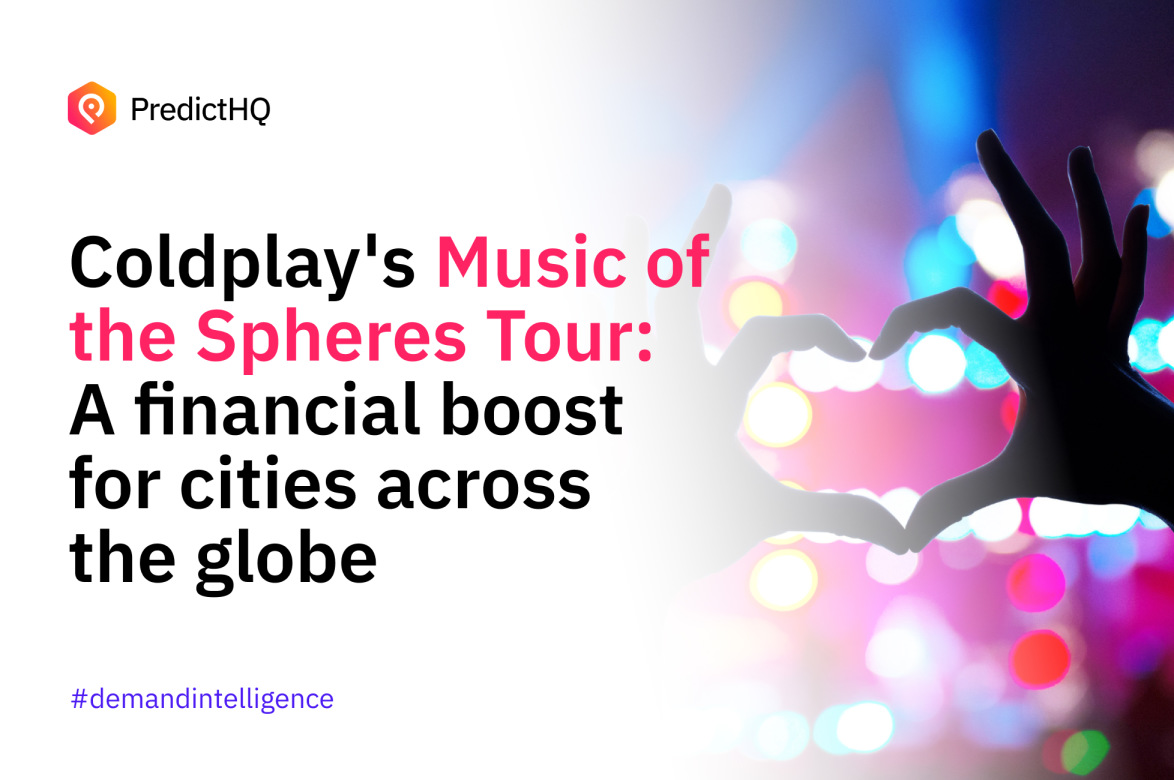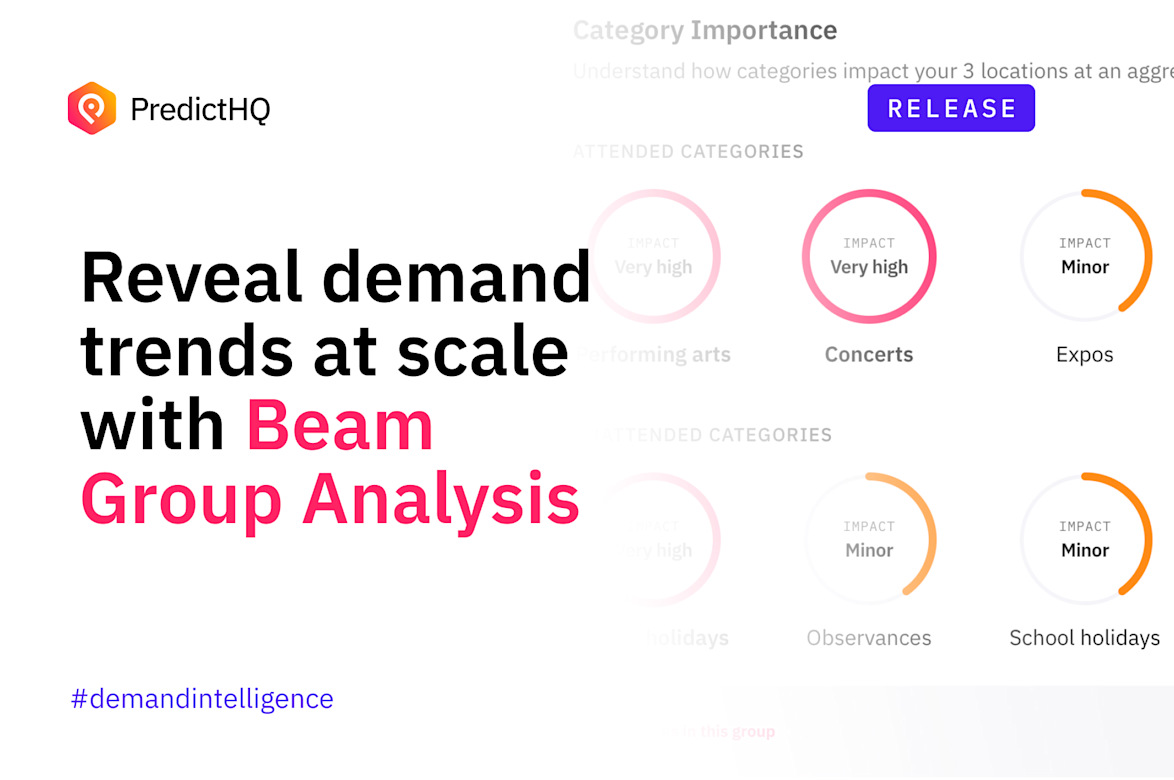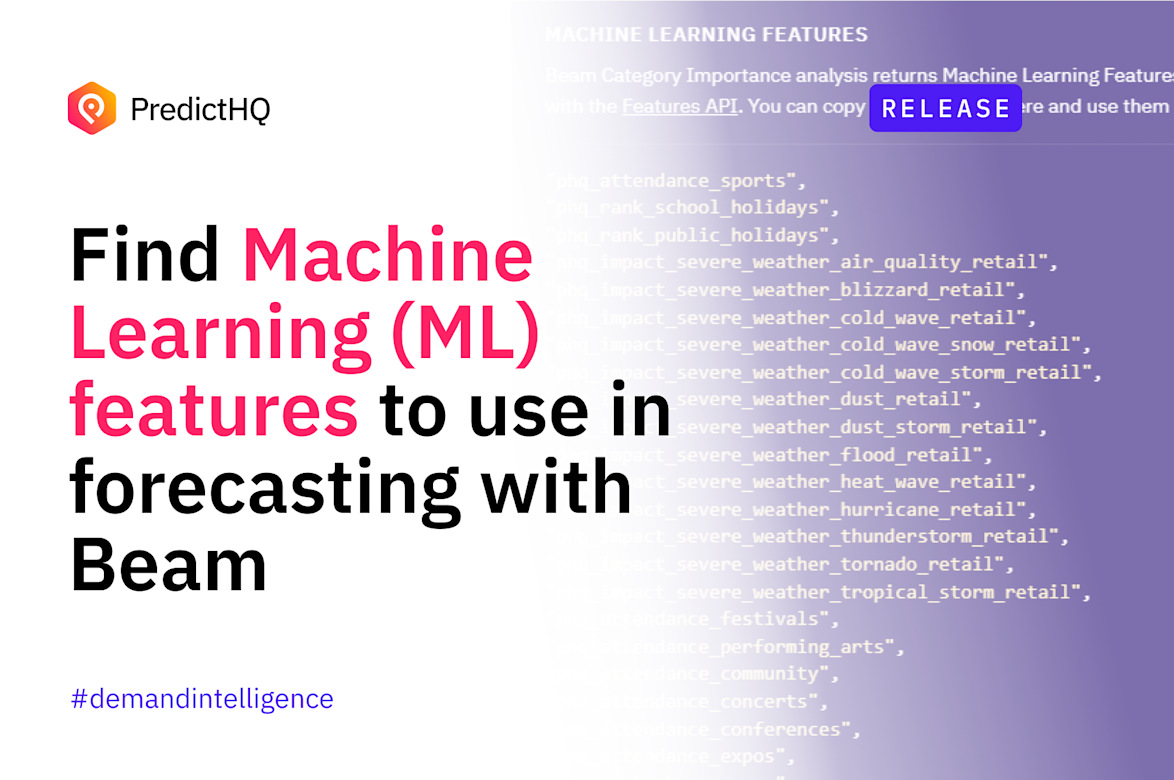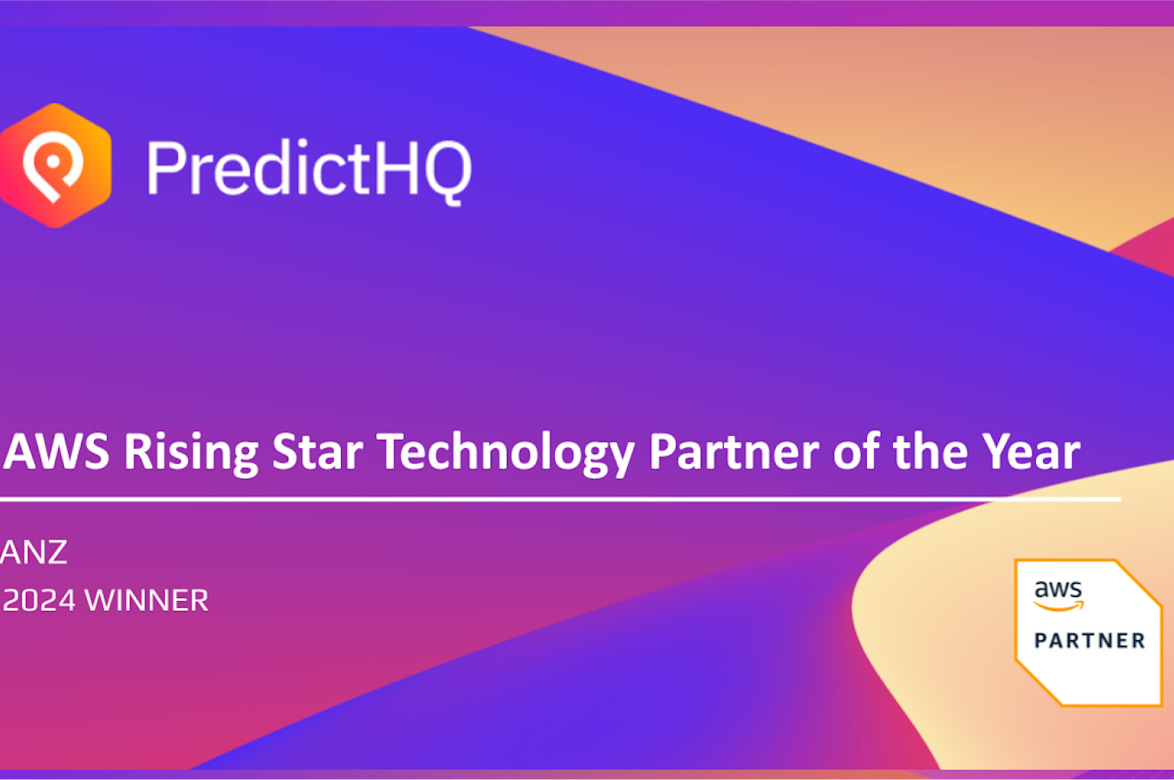Predicting the event economy: How to use Predicted Event Spend to boost revenue

Whether it’s a concert, expo, or sports tournament, live events are powerful drivers of economic activity. For example, Taylor Swift’s Eras Tour alone is predicted to add over $4.6B in consumer spending to the U.S. economy. With advanced knowledge of demand-driving events, businesses can use event-based marketing to tap into the massive consumer spending they bring.
For example, digital out-of-home agencies combine event data with other third party data, such as point of interest data, to strategically position their ads across mediums including digital ad screens in public spaces, billboards, and travel hubs. Just imagine the various tactics like in-store promotions, POS activation, pre-event email marketing, contests and giveaways brands could leverage for events like a Taylor Swift concert.
To truly harness the potential of event-based marketing, businesses need to identify the sweet spot where their demand catalysts overlap with the events that their target audience genuinely cares about. You will need to strategically select events that resonate with your brand and align with your target market's interests.
That's where Predicted Event Spend comes into play. PredictHQ’s newest feature provides businesses with an invaluable edge by offering a calculated estimate of the anticipated retail, accommodation, and transportation spending in a specific area due to a major event. With this insight, you can stay ahead of the curve and make informed decisions to maximize your business's potential during these event-driven economic booms.
Let's dive into the four essential steps that will empower you to tap into this treasure trove of event-based spending:
1. Get personal with your target audience
Demographic and psychographic information on your target audience can be collected via surveys and focus groups, or by leveraging social media analytics and social listening, partnering with reputable market research firms, analyzing website traffic, and even by mining data from public sources. You can also make use of aggregated, privacy-safe sources such as intelligent event data to save on the time and costs associated with sourcing audience data.
Armed with demographic data and a deep understanding of events on a hyper-local level, you can begin mapping out the upcoming events that align with your target audience's interests and preferences:
Segment your target audience. Different events attract different types of attendees, so segment your target audience based on the event type and spending patterns to tailor your marketing strategies effectively. For example, Alice is a 35-year-old professional woman who is interested in fashion and lifestyle events. She has a high income and is willing to spend money on high-quality products and experiences. As an attendee of Big Hat Days on the weekend of April 6 and 7 in Fresno, CA her individual spending based on the festival’s predicted attendance of 180,000 and predicted event spend of $12,187,855 may be: $800 on accommodation based on a two-night stay $500 on food, drinks, and shopping $200 on rideshares while in town
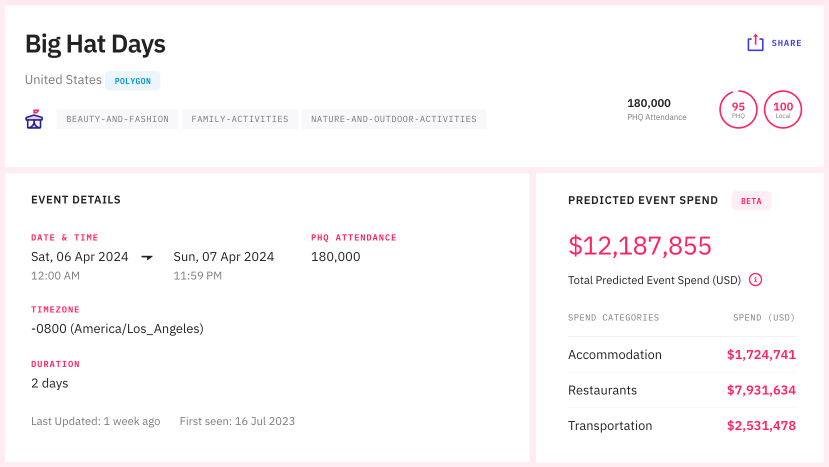
Identify the specific event type to focus on attracting the right customers. As mentioned earlier, the key to success in event-based marketing is finding the overlap between major events impacting your business and the events your target audience will be attending. This also helps to ensure that your marketing efforts are aligned with the event's purpose. For example, a boutique hotel chain could use Predicted Event Spend data to identify demand-driving events that would attract someone like Alice – such as charity galas, fashion shows, or food and wine festivals – and create a targeted marketing campaign for the event type identified in their category importance analysis.
Use Predicted Event Spend to better understand the spending patterns of your target audience. This makes it easier to optimize your marketing budget and allocate resources where they would have the most impact. For example, if you know that event attendees are likely to spend big on transportation, you might want to allocate more of your budget to advertising on transportation apps.
Once you have a clear understanding of the event, its spending potential, and your target audience, you’re ready to optimize your marketing strategies based on these data points.
2. Identify the most relevant events to focus on
To effectively pinpoint rich pockets of consumer spending, businesses must next identify the key events that hold significant potential for revenue growth. Depending on your business type, location, size, customer base, and more, these events may cover a wide range of event categories from industry conferences and trade shows, to cultural festivals and sports events.
You can identify the event types most relevant to your business in seconds with a free event category importance analysis. This way, you know which event categories act as demand catalysts for your business, and you can focus your efforts on tracking those events and their predicted economic impact. Easy access to this data allows your entire team to anticipate the potential economic impact of these events on your business.
3. Create timely campaigns that resonate with your audience
Once armed with reliable insights into event-based spending, a comprehensive event calendar, and a deep understanding of the target audience and personas – businesses can embark on crafting highly targeted marketing campaigns.
With messaging, content, and creative assets tailored to align with specific events, organizations can create marketing materials with laser-focus, optimized to resonate with their event-goers who are their target audience.
By fine-tuning your timing and messaging to match the event atmosphere and the preferences of your target customer persona(s), you can tap into the emotions of your customers and create a much more memorable experience with your brand. For example:
Targeted advertising: Allocate a portion of your marketing budget to advertise during the event when and where consumer spending is predicted to be high.
Special promotions: Create event-specific promotions and discounts to attract event attendees with a sense of personalization and exclusivity.
Social media engagement: Interact with event-goers on social media with event-related hashtags and contests to encourage user-generated content.
Local collaborations: Partner with event organizers or other local businesses to cross-promote and increase visibility for your brand.
4. Measure and Analyze Results
After the event, analyze the results of your efforts. Did your predictions align with actual spending? Assess the effectiveness of your marketing strategies and operational adjustments. Use this data to refine your approach for future events.
Once you have launched your marketing campaigns, it is important to track and evaluate the results. Whether it’s content you’re publishing or a search campaign, you need to know what works so you can repeat success. This will help you determine which campaigns are most effective at what times, and make adjustments as needed. It is key to monitor campaign impact during various events and demand periods to optimize the timing of your ad strategy.
By understanding the locations and timings where consumer spending is expected to be at its peak, marketing teams can better predict campaign ROI and ensure they're focusing on the highest potential impact areas.
Explore the economic impact of events near you
Predicted Event Spend is a valuable resource for businesses looking to tap into the economic potential of major events. By understanding the spending patterns of event attendees, optimizing marketing strategies, and making necessary operational adjustments, businesses can unlock new opportunities for growth and success.
Our data seamlessly integrates with your existing demand forecasting and analytics tools, making it easy to incorporate Predicted Event Spend figures into your existing workflows. Sign up for your free 14 day developer trial today to make the most of these exciting economic catalysts.





